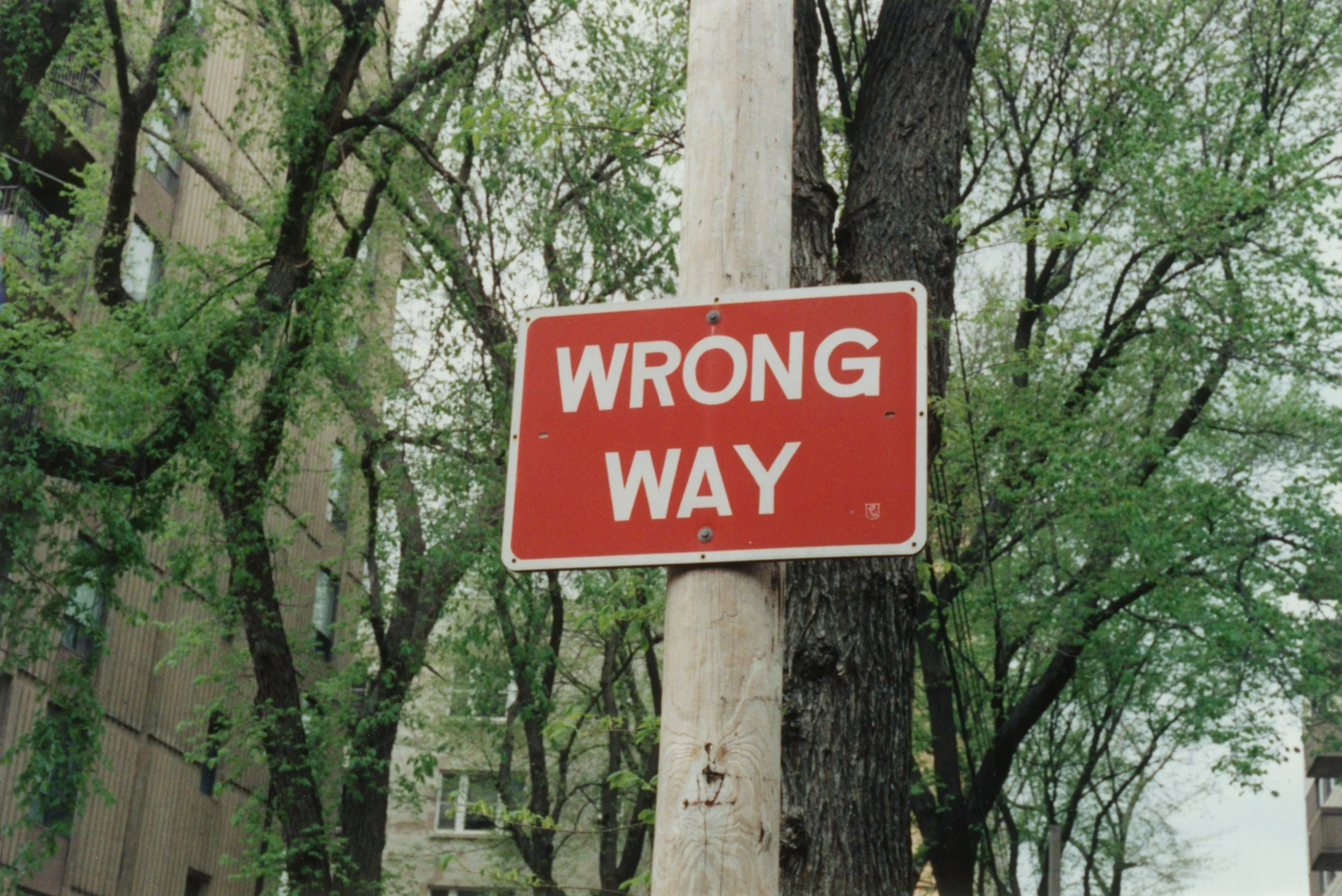Should We Stop Using the Em Dash Because AI Favors It? No!
I refuse to let my favorite punctuation mark be a casualty of AI
In the past two weeks or so, I have been noticing that Grammarly has developed a grudge against em dashes. The application—which, yes, I use as a tool in my editor’s toolkit, knowing that it’s helpful to me but not sufficient on its own—has been trying to get me to replace em dashes with commas at every opportunity.
I didn’t think much of it until I received an email from a client asking me to minimize usage of em dashes in the blog posts I write for them:
“Em dashes are apparently not cool anymore. It’s a hallmark of AI writing so best to minimize.”
Shocked, I searched online and found several links saying that the em dash had indeed been flagged as an indicator of AI.
I couldn’t believe it.
AI has stolen my favorite punctuation mark, I fumed.
I’m so happy my favorite punctuation mark is getting much-deserved attention. But if I hear the em dash referred to as the “ChatGPT hyphen” one more time… (Photo by Nachristos on Unsplash)
I wasn’t the only one incensed. (The title of this blog post by Adam Cecil made me laugh out loud.) All of a sudden, a beloved yet under-the-radar punctuation mark used by writers for centuries was going viral as the “ChatGPT hyphen.”
How did this happen?
Well, as The Boston Globe pointed out, AI was trained (without the writers’ permission, it should be noted) on the work of great writers who were/are familiar with the em dash:
“ChatGPT’s writing is the product of the 90 Pulitzer Prize nominees from 1924 to 2020, 95 bestsellers from The New York Times and Publisher’s Weekly in the same timeframe, and other works it was likely fed in its development. That’s a lot of writers who probably favored the em dash.”
Those writers prize the em dash for a reason. It’s a powerful punctuation mark that can bring clarity to a long sentence, add punch to dialogue, and bestow gravitas to a phrase or clause that the writer wants to emphasize—among other uses.
Despite its effectiveness, the em dash isn’t a common punctuation mark. I myself didn’t use it until I started training as a copy editor. So, the em dash’s historical obscurity, paired with AI’s sudden promotion of the mark, caused people to make the false connection that the em dash was an AI indicator: the “ChatGPT hyphen.”
It would be funny if it weren’t giving me heart palpitations!
“The em dash is such a powerful writing tool that also carries great subtlety to it,” Aileen Gallagher, a journalism professor at Syracuse University, told The Washington Post. “The idea that it is an indicator of soulless, dead AI-generated writing is really upsetting to me.”
Same, Aileen, same.
Ironically, the em dash may be a sign not that content was generated by AI, but that it was edited by a pro editor who knows how to use em dashes!
Yet there may be one positive outcome of this situation.
Because of how useful the em dash is, those who know how to use it tend to overuse it. Reducing em dashes is indeed something I focus on when editing my clients’ work. (PSA: The general rule is to use only one, or one set, per paragraph, or better yet, every few paragraphs.)
So, minimizing em dash usage was wise even before AI got involved.
But the em dash shouldn’t be eradicated, and it definitely shouldn’t be labeled as a sign of AI. After all, its 10 minutes in the sun might have led to more people learning how to use it in their writing!
The defamation of the em dash serves as a warning of how AI may influence language in the future. AI has rapidly become a ubiquitous tool, and it’s developing fast, but it’s hardly foolproof. As we use it, we have to be careful that it doesn’t lead us illogically astray.
Want to read more about this subject? I found these articles/blog posts to be well-researched and informative:
Want to know more about the em dash? Like, what it is, how to type it on the keyboard, and how to use it? I’m writing a blog post about it, but in the meantime, read The New York Times’ explainer.
Enjoy this post? Buy me a coffee in support.
Hi, I’m Jaime, editor and owner of Pristine Editing LLC. To get to know me better, and for more editing tips, sign up for my quarterly email newsletter! You can also follow me on LinkedIn and Instagram. My website is pristineediting.com, and there you can find my free style guide template.
Grammarly Doesn’t Always “Grammar” Right, Studies Show
The software is helpful but sometimes misses the mark.
Photo by Randy Laybourne on Unsplash
My beef with Grammarly is twofold: One, it doesn’t catch all errors; two, it introduces errors to the content. (Which, by the way, is a golden rule of copyediting: Never introduce an error.) Grammarly often suggests “fixes” that aren’t correct.
Dorothy Mayne, faculty associate at the University of Wisconsin-Madison’s writing center, wrote a blog post that examined Grammarly as a tool, particularly for ESL students. She highlighted examples of inaccurate suggestions Grammarly made, which included adding commas and articles (a, the) where it would be incorrect to do so.
(As her blog post notes from this 2014 study on Grammarly, the software doesn’t provide positive feedback to writers, which is a huge part of what editors do.)
A 2021 study of Grammarly, cited in this blog post by Brigham Young University’s editing blog “Editing Research,” found that 66 percent of the errors the software detected were accurate. Grammarly did not detect 7 percent of the errors in the content. The authors of the study (linked below) wrote, “The usage of Grammarly as a stand-alone product may not be optimal.”
Even Grammarly’s users agree the tool is a great backup but not totally reliable. A blog post for writers and content marketers from “The Blog Smith” rounded up a selection of reviews.
Here’s one: “I’ve used the full paid version in the past, but found it cumbersome to sort through which of their recommendations were correct and which weren’t. I think you need to know your grammar rules pretty well yourself to know when to override it,” says a Grammarly user named Kathy Krueger.
Other complaints included that Grammarly didn’t know industry jargon and didn’t apply well in creative content that could have a unique voice.
To sum it up, Grammarly is a “useful but imperfect tool,” as Mayne wrote.
As an editor, I find Grammarly helpful in spotting misspellings of proper nouns, quickly identifying and fixing hyphenations, and double-checking subject-verb agreement. But in every piece of content I use it for, I’m rejecting some of Grammarly’s suggestions as well as accepting others.
If you’re a writer, it’s a great idea to apply Grammarly and a spell-checker to your writing before you submit your project. Editors are always appreciative when writers send them content that’s as clean as they could make it. But Grammarly isn’t what’s going to make your document publication-ready. A human editor is.
***
Enjoy this post? Buy me a coffee in support.
Hi, I’m Jaime, editor and owner of Pristine Editing LLC. To get to know me better, and for more editing tips, sign up for my quarterly email newsletter! You can also follow me on LinkedIn and Instagram. My website is pristineediting.com, and there you can find my free style guide template.
Why Is Copyediting Important?
Copyediting is quality assurance.

Photo by Clément Falize on Unsplash
Think you can get away with not copyediting your content? Think again.
Your audience values error-free content. The quality of your written content affects their purchases and their perception of your brand.
No matter what type of content you are releasing to the world, you need a copy editor. Nothing says unprofessional and untrustworthy like poor language.
Plenty of research confirms the value of copyediting.
Copyediting is an important function for the integrity of both print and digital content, a 2007 study reported.
Readers can tell when a news article isn’t edited, and it affects their perceptions about the news and their willingness to pay for it, according to a 2015 study. Even college-aged people value edited content free of errors: “Digitally savvy young people picked up on editing differences and reacted negatively to unedited content,” says an American Press Institute blog post about the study.
People have similar standards for marketing copy. A SurveyMonkey survey found that 85% of millennials are less likely to buy a product advertised with errors, and the same is true for 83% of people with a household income of $75,000 and higher.
Poor spelling and grammar are warning signs of an email scam.
And, of course, editing contributes to the success of books: 74% of book authors who earned more than $5,000 in sales invested in editing, while 53% of authors who earned less than $100 in sales did not invest in editing, according to a 2017 BookBaby survey of nearly 8,000 indie authors.
But I get it. You have a lot on your plate. Editing your content falls by the wayside in the rush to share it with the world.
That’s where Pristine Editing comes in!
We offer professional editing services that integrate seamlessly into your existing workflow. Send us your copy, turn your attention to other tasks, and in no time at all, we’ll return your pristine content to you.
Your audience will get the full impact of your words without being distracted by weird phrasing or misplaced punctuation.
Whether you’re a publication with tight deadlines, a freelancer or a small business launching a website and a newsletter, or a large company or organization about to release a white paper or cross-platform marketing campaign, Pristine Editing can contribute to the unwavering high reputation of your brand.
Kick-start a conversation with Pristine Editing by filling out this two-minute project request form.
Enjoy this post? Buy me a coffee in support.
Hi, I’m Jaime, editor and owner of Pristine Editing LLC. To get to know me better, and for more editing tips, sign up for my quarterly email newsletter! You can also follow me on LinkedIn and Instagram. And don’t miss out on my free style guide template.
6 Tabs I Always Have Open as I Copyedit
These references are my constant companions
Ever wonder what goes on behind the scenes when a copy editor polishes your content? It’s mostly reading a sentence three times and sometimes going back to read it a fourth; pondering; and looking things up.
As editor Crystal Shelley of Rabbit with a Red Pen once said, “Editing is just looking things up until you die.”

Photo by
on
What are editors looking up?
correct style (e.g., does the client want it to appear as 10 or as ten, as colour or color; do they use accent marks or no; do they like the ellipsis character mark or the three periods plus three spaces)
correct spelling
dates and job titles, etc. (to confirm them, in a sort of light fact check)
obscure grammar rules we don’t know off the top of our head or want to double-check for a tricky situation
definitions of words to make sure the writer has used them well
The list goes on.
To look up that stuff as I copyedit, I always have these six tabs open:
The Chicago Manual of Style or The Associated Press Style Book
clients’ house editorial style guide
site:website.com and “X”
The Chicago Manual of Style hyphenation guide
online search engine
‘The Chicago Manual of Style’ or ‘The Associated Press Style Book’
The two most typical style guides my clients use. Depending on the project, I’ll have one of them open for reference (I subscribe to the online versions). These resources offer guidance on everything from grammar, punctuation, and formatting to the correct usage of numbers, abbreviations, capitalization, and more.
Clients’ house editorial style guide
Many clients—though not all—use a house style guide in addition to one of the industry-wide guides above. I love when a client has an editorial style guide, but for clients who don’t, I can easily create one. These house guides contain specific preferences and brand-related language use that enables me to tailor the copyediting process to each client.
site:website.com and “X”
This online search engine technique comes in super handy mainly when a client doesn’t have a house style guide, and even when they do.
Typing site:website.com into a search enginerestricts the search results to only pages from the specified website. To search for a specific word or phrase, I add it in quotation marks after site:website.com and the word and: e.g., site:website.com and “X” searches for the exact word or phrase “X” on that site.
I use this tool to quickly find out how a client has typically styled a word or phrase on their website. It’s a great way to determine how a publication or organization has most commonly styled a word—even if the staff themselves aren’t sure. For example, imagine my client is The Daily News Bites, and the newspaper has a house style guide, but it doesn’t specify to use healthcare or health care as a noun. I can search site:dailynewsbites.com and “health care” as well as site:dailynewsbites.com and “healthcare” to see which style the newspaper uses most often (and then I can add that preference to the style guide I make for the client).
To use this tool successfully, I need a search engine that lists the number of search results so I can determine which style is most common.
That’s the entire reason I stopped using Google Search and now use Microsoft Bing. I’d love to use a data-privacy search engine like DuckDuckGo (I did use Neeva before it went belly up), but again, seeing the number of search results is critical, and DuckDuckGo doesn’t allow that.
https://x.com/PristineEditing/status/1483573898973220870
Merriam-Webster
My go-to dictionary. In May 2024, AP style made M-W its official primary dictionary, which means I can use M-W for all of my clients, whether they use Chicago or AP style.
I most often use Merriam-Webster to:
check hyphenations
see if a foreign word is listed (if a foreign word appears in M-W, it doesn’t need to be italicized, as is common style for foreign words — although there are exceptions to that)
clarify the precise meaning of a word in context to make sure the writer’s word choice is accurate
The ‘Chicago Manual of Style’ hyphenation guide
Half the time I’m searching for a word in Merriam-Webster, it’s simply to check if a word is hyphenated or not. This guide provides clear rules for hyphenation (for Chicago style, that is), ensuring uniformity of style throughout a document.
Online search engine
I’m constantly searching for nouns and proper nouns—company names, historical figures, scientific terms, etc.—to check that they’re spelled correctly and in the correct case (e.g., capitalized or lowercase).
This often leads to a little fact-checking too. In looking up the spelling of a politician’s name, for example, I’ve occasionally caught a writer calling that politician a senator when they’re a House representative.
Similar to site:website.com and “X” above, I often use an online search engine to determine which style for a word or phrase is the most used (and therefore the most SEO-friendly). For example, if I want to determine whether school teacher or schoolteacher is more common, I add quotation marks around each term in the search: e.g., “school teacher” and “schoolteacher.” Microsoft Bing tells me that school teacher has 36,200,000 results while schoolteacher has 138,000 results.
So, there you have it! These six tabs are my trusty crew when it comes to copyediting. Having these resources readily available allows me to ensure my clients’ content adheres to the highest editorial standards.
Do you have any questions about these resources or the copyediting process in general? Feel free to leave a comment below.
Enjoy this post? Buy me a coffee in support.
Hi, I’m Jaime, editor and owner of Pristine Editing LLC. To get to know me better, and for more editing tips, sign up for my quarterly email newsletter! You can also follow me on LinkedIn and Instagram. And don’t miss out on my free style guide template.
Case Study: SpecialGuest
How I helped communications and art company SpecialGuest by doing a substantive website edit
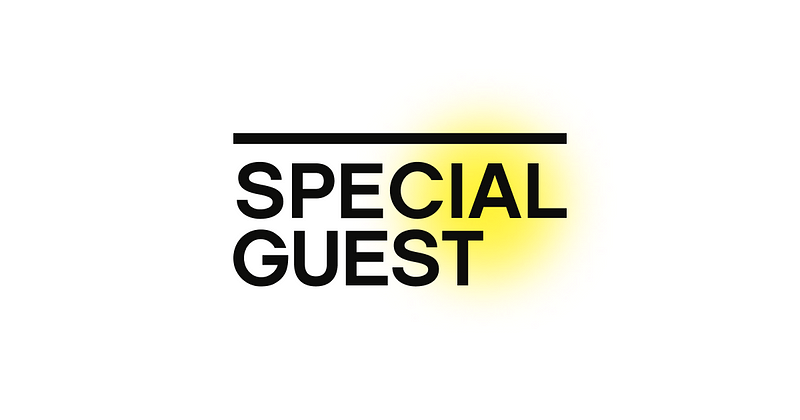
Situation
In May 2023, a colleague I had edited for at The Atlantic and then at Cove emailed me from a new company, SpecialGuest, to ask if I would do a full copy edit of the agency’s website.
SpecialGuest, co-founded by Aaron Duffy, whose name you might know from his work on OK Go’s viral music video “The Writing’s on the Wall,” helps “the world’s most influential brands” create “communications as innovative as their products.”
By chatting via email with other staff members at SpecialGuest, I learned that the agency was balancing quite a few projects and wasn’t ready to dive into a website copy edit quite yet. I checked in a month later, then again almost one year later.
This time, SpecialGuest was ready! The project manager scheduled a virtual video chat with Aaron Duffy and one of the agency’s designers, during which we hashed out the goals and details of the project.
SpecialGuest didn’t want just a copy edit to remove errors, it wanted consistent, simplified, optimized language from the Home, About, and Contact pages to the Our Clients page and case studies, to bring the copy up to date with what is true for the agency now. In other words, it wanted a substantive edit.
Over the next two weeks, I created a proposal and project estimate, finalized the contract with the agency, and received the 50 percent deposit.
Task
SpecialGuest needed to update the case studies featured on its Our Clients page. While the Home page reflected the agency’s current voice, tone, and brand, the case studies, published as long ago as 2015, did not.
“We’re not always speaking the same language project to project,” Duffy said.
Scope of the project
In addition to the substantive edit, I would user-test the website—noting formatting or design that didn’t make sense, repeat images, fuzzy images, etc.—and build an editorial style guide for the agency.
SpecialGuest wanted the project completed by early May 2024, when a forthcoming launch would result in many eyes on the website.
Action
SpecialGuest provided me with a spreadsheet an intern had built to audit the website and note suggested fixes. It also shared its pitch deck for clients as an additional reference for how the agency talks about itself.
Over a week, I copy-pasted SpecialGuest’s web copy into a Google Doc, where I tracked my changes and left comments with larger questions or requests for additional information. This would allow edits to be a discussion: If SpecialGuest wanted to push back on or talk about an edit, it could.
Once the edits were finalized, I entered the changes into SpecialGuest’s content management system.
SpecialGuest did not have an existing style guide, so during the edit, I noted obvious style preferences shown on the website and collected and organized them in a Google Doc.
I also:
Reviewed all case studies to determine a consistent structure, based on the agency’s existing structure, and reorganized the content to suit that structure;
Trimmed or lengthened the case studies so they were roughly the same word count;
Watched every video on the case-study webpages to pull more details about each project;
Made sure each case study addressed the ethos of the Home page;
Copyedited and user-tested the entire website; and
Left comments asking for clarification or additional information.
SpecialGuest reviewed the changes and responded to comments.
Result
In a month, I performed a substantive edit of four website pages and 33 case studies, helping SpecialGuest to present a unified front that powerfully conveyed the pioneering work it had produced for clients.
Besides noting style preferences, the editorial style guide I created for SpecialGuest included a case-study template to help the agency sustain consistency as it published more case studies.
Want to see the finished product for yourself? Check out the website and its case studies here.
Enjoy this post? Buy me a coffee in support.
Hi, I’m Jaime, editor and owner of Pristine Editing LLC. To get to know me better, and for more editing tips, sign up for my quarterly email newsletter! You can also follow me on LinkedIn and Instagram. And don’t miss out on my free style guide template.
9 Overloved Words and Phrases
Cut these from your content on Valentine’s Day (and always)
Those extraneous embellishments in the form of unnecessary adverbs, redundant adjectives, and vague nouns are smothering your words of note.
Show them a little love by giving them room to breathe.
Here are 9 overloved words and phrases to delete from your content now.

Photo by
on
1. the fact that
William Strunk Jr. and E.B. White, authors of the ubiquitous The Elements of Style, say the fact that is an “especially debilitating” expression that should be cut without exception.
The fact that can almost always be replaced. Here are some common replacements, according to The Elements of Style:
owing to the fact that —> since/because
in spite of the fact that —> though/although
call your attention to the fact that —> remind/notify you
I was unaware of the fact that —> I was unaware that/I did not know that
the fact that he had not succeeded —> his failure
the fact that I had arrived —> my arrival
Often, cutting the fact works well too:
“Putting aside the fact that nearly 1 in 4 Americans are unable to afford medical treatment” can become “Putting aside that…”
2. actually
Benjamin Dreyer, former copy chief of Random House, wrote in his book, Dreyer’s English, that actually can almost always be cut. We use it colloquially for emphasis, but it’s just drowning what would otherwise be a firm statement.
Dreyer goes on to suggest we also cut very, rather, really, quite, in fact, that said, pretty (the adverb, as in pretty great), of course, and that said.
3. first-ever
“It was the first parade in the town” means the same as “It was the first-ever parade in the town,” without the extra word.
If something is the first, we know it is the first…ever.
4. just/only
These, in adverb form, are often used before a measurement or number of some kind to emphasize the amazement of that measurement/number. “The round-trip flight costs just $300!” “The runner completed the marathon in only 3 hours!” But if the measurement/number is so amazing, it doesn’t need your petty just or only.
5. there are
There are delays the reader’s arrival to the substance of the sentence. (I was so close to writing just delays and then edited myself!)
“There are dozens of restaurants in the neighborhood that serve excellent pizza” can easily be “Dozens of restaurants in the neighborhood serve excellent pizza”—and it saves the audience from three say-nothing words (e.g., there are and that).
6. In addition to + also
Also is redundant when it follows an introductory participle phrase using in addition to.
For example, we don’t need to say, “In addition to providing delicious food, the restaurant also offers gorgeous views.” Cut the also.
Another example: “In addition to introducing new routes and destinations, Breeze also is expanding its fleet.” Cut the also!
7. that
Editors argue over this one. Some are totally against the overuse of that as a conjunction. Others say it’s necessary for clarity.
Personally, I’m all for excluding that wherever possible. It’s okay to write, “She told me you were going to the party,” instead of “She told me that you were going to the party.”
8. Unnecessary verb + preposition pairs
This one is my pet peeve. Do you really need to say open up? Or does open suffice?
You don’t need to say “She climbed up the ladder.” “She climbed the ladder” is sufficient.
Write out is another. You don’t need to say “She wrote out her name on the chalkboard.” “She wrote her name on the chalkboard” is great.
Conjure up should just be conjure.
Printed out —> printed. Seek out —> seek. Rise up —> rise.
The water cools down to 70 degrees —> The water cools to 70 degrees.
Next time you encounter a verb + preposition pair, ask yourself if the preposition is necessary.
9. including + and more
Including and and more are often used in a list of items, or a series, but as a general rule, they shouldn’t appear together.
Don’t say, “The city has tons of attractions, including a circus, museums, an array of restaurants, and more.”
Including already implies that a circus, museums, and an array of restaurants are only some of what the city has to offer—so we don’t need to say and more, which is vague anyway.
Alternatively, you might write, “The city offers a circus, museums, an array of restaurants, and more.”
https://x.com/PristineEditing/status/1757873535907688663?s=20
Enjoy this post? Buy me a coffee in support.
Hi, I’m Jaime, editor and owner of Pristine Editing LLC. To get to know me better, and for more editing tips, sign up for my quarterly email newsletter! You can also follow me on LinkedIn and Instagram. And don’t miss out on my free style guide template.
Hot Tip for Writers Who Want to Raise Rates
The tool I use to make smart, informed rate increases
Hey, freelance writers. It’s not too late to raise your rates for 2024. Before you send that email to your clients notifying them of changes, do this first:
Add data about past projects to your email. Data will make your clients clear on the benefits they’ve gotten from you and therefore happy that they’ve invested in you—and eager to keep the collaboration going.
To get the data you need …
Track every piece of content for every client.

Photo by
on
Easy Tracking
Tracking is not time-consuming, especially if you do it from the get-go. (I once made a tracker after a year of working with a client and scoured every invoice between us to record the data.)
I use a simple Google Sheet, which you can find at the bottom of this post.
For every blog post I write for a Wall Street Journal–bestselling author, I note:
➡ the date
➡ was the idea mine or the client’s?
➡ time spent writing
➡ time spent revising
➡ was it published? (if not, why not)
➡ how did it perform?
**If you don’t have access to performance metrics, get creative! I don’t have access to metrics for this client, but I do note which blog posts make the author’s Top Articles webpage, for example.**
This data will help you understand your value and see smart ways to increase your rates or change your packages.
I’ve used my tracker to support switching from an hourly rate to flat fee, increasing rates, and changing offers.
Recently I increased my flat fee 43% by including 90 minutes of revisions compared to 30 minutes previously.
My tracker showed that in 2+ years with this client, only a handful of blog posts needed 90+ minutes of revisions. The majority of blog posts needed 30 minutes or less of revisions, if any. Less than 20% needed between 30 and 90 minutes of revisions.
So I could increase my flat fee while offering the client a great benefit I knew they wouldn’t often need. Which means I earn more without always working more.
https://media.giphy.com/media/N7LUQBiVLUItW/giphy.gif
Prepare to Negotiate
Did the author push back on the new fee? They did. The rate increase was, after all, significant.
But here’s another piece of freelance wisdom I’m learning to accept, albeit nervously: Clients challenging your rates is good. You should aim to reach their budget limits and get pushback.
When I had proposed a rate increase to the author a year prior, the rate wasn’t as high as I wanted it to be. I was scared to ask for too much. Yet the author accepted it without question, and I spent the rest of the year kicking myself for not asking for more.
This has been a sad pattern throughout my six-year freelance career.
Now I’m trying to get more comfortable with charging uncomfortably high. I feel more comfortable doing so when I have the data to show my work is worth that rate.
I want my rate increases to invite negotiation, even though I don’t enjoy it.
Negotiation is not my strong suit, and my clients are very smart and successful. Negotiating with them is intimidating.
When the author pushed back on my rate increase recently, they asked me to reiterate why the increase was so high. We discussed variations to what was included in the flat fee:
blog post, plus 90 minutes of free revisions
blog post, plus 30 minutes of free revisions, plus social media posts for each blog post (which would save the author the cost of paying someone else to do it)
Here, too, the tracker came in handy. I used it to advocate for the offering that would work best for both of us. I showed the author the value they would get from 90 minutes of revisions and, alternatively, the value from including social media posts.
Notably, I used the tracker to reject a variation that didn’t work for me. The author proposed using the 90 minutes to do the revisions and allocating any leftover time for social media. But my tracker showed that drafting a blog post sometimes takes me longer than expected and cuts into the time for revisions. It didn’t make sense to pack too much into a flat fee.
When I showed the client the data, they understood.
Ultimately, the author settled on the original offer I had made and even asked me to do a trial period of writing social media posts, paid by the hour.
The negotiations were a journey, but worth it.
**I’m sure there are much fancier trackers out there, but if you’re in Google Suite all day as I am, then feel free to copy the tracker I use.**
Enjoy this post? Buy me a coffee in support.
Hi, I’m Jaime, editor and owner of Pristine Editing LLC. To get to know me better, and for more editing tips, sign up for my quarterly email newsletter! You can also follow me on LinkedIn and Instagram. And don’t miss out on my free style guide template.
Case Study: The Atlantic/Google
How I helped The Atlantic’s creative content studio by copyediting a magazine for Google in a week

Dialogues, a Google magazine produced by ABP
Situation
In October 2023, Atlantic Brand Partners, the creative content studio of The Atlantic, asked me to copyedit a major project with one week from that day: a print magazine on artificial intelligence that ABP was producing for Google. The print magazine would include 16 stories (some interviews, some essays) in total, ranging from about 1,000 to 3,000 words.
Task
But there was an added challenge.
I only had 24 hours to copyedit each story. ABP would send the stories in Google Docs to me piecemeal, and I would edit them immediately: If I received a story by 10 a.m., ABP needed it back by 10 a.m. the next day. If I received a story by midnight, I had to return it by midnight the next day. Designers and other teams were working round the clock on this project.
Action
My agenda for October was already full, but the project sounded too cool to turn down. (I love copyediting print magazines.) So I rearranged my schedule as much as I could by asking my other clients who I knew might have flexible timelines if they would accept a deadline extension. I worked late and woke up early in order to meet ABP’s grueling schedule.
I also created a project management document in Google Sheets that would allow the ABP team and me to track each piece, word count, and deadline and rely on automatic notifications to reduce emails.
During the copyedit, I adhered to The Atlantic style, made corrections for grammar, punctuation, spelling, and syntax, and left comments with larger questions and concerns, as well as suggestions for fixes wherever possible. I caught mathematical/statistical errors. I communicated with editors to resolve larger concerns in a way that worked for all parties involved.
Result
In one week, I copyedited 44,070 words, allowing ABP to create a gorgeous magazine on a super crunched deadline for a major client.
Here is the resulting testimonial from Elizabeth Haq, who oversees editorial content and brand partnerships for ABP: “Thank you sincerely for the wonderful work you put into it. I think it turned out amazing, and the client agrees.”
Another editor who worked on the project, Gabriel Muller, said, “Thanks for all your great work on the Google Magazine. I’m always so impressed by the details you’re able to catch.”
Want to see the finished product for yourself? Check out the magazine and download it here.
Enjoy this post? Buy me a coffee in support.
Hi, I’m Jaime, editor and owner of Pristine Editing LLC. To get to know me better, and for more editing tips, sign up for my quarterly email newsletter! You can also follow me on LinkedIn and Instagram. And don’t miss out on my free style guide template.
A Small Yet Mighty Step I’ve Taken to Get Myself Credit as an Editor
When I first started working as a freelance copy editor in 2014, getting recognition for my work was furthest from my mind.
What was front and center was getting work. Any kind, any pay.
Then I began working as full-time copy editor at Time Out New York and learned the pleasure of having my name included in the masthead of every weekly issue.
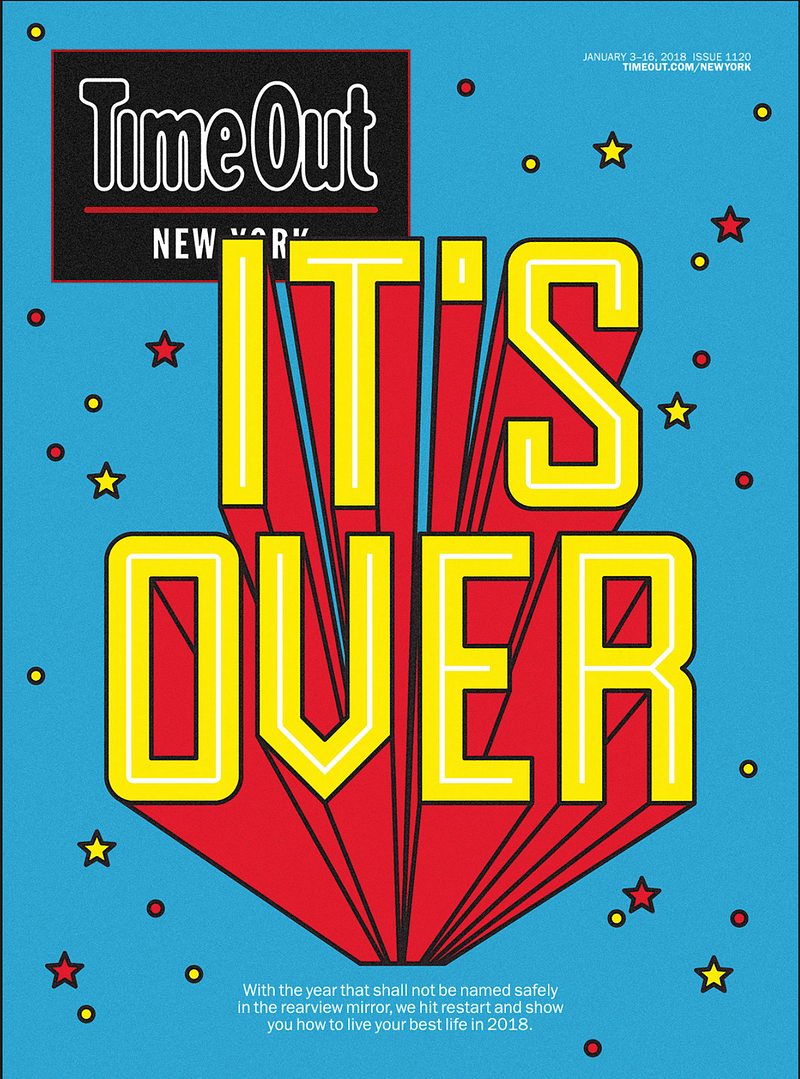
The cover of the last TONY issue I worked on in January 2018
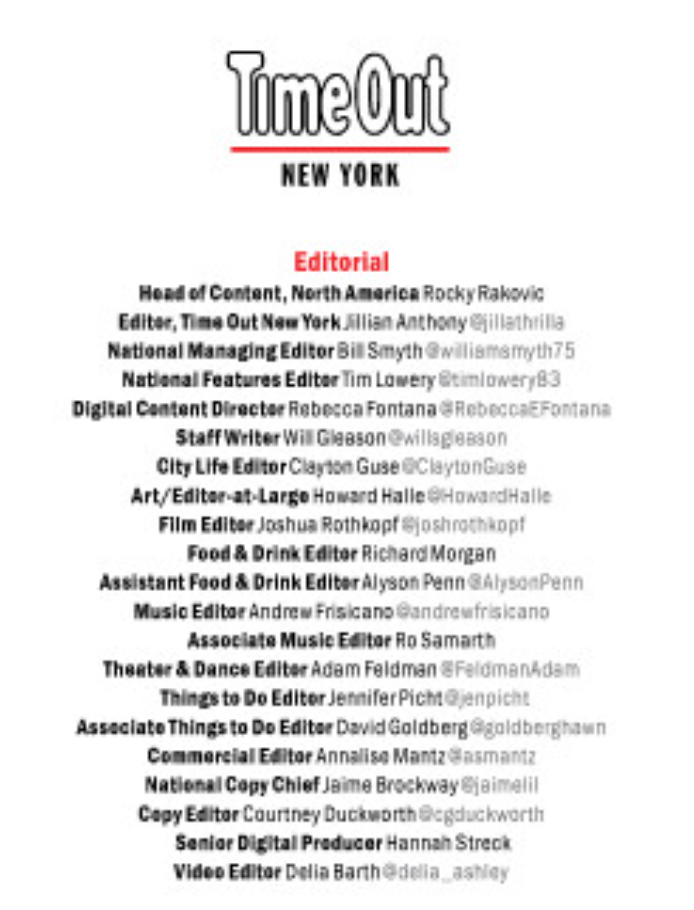
My name in the blurry masthead of the last TONY issue I worked on in January 2018 (four up from the bottom)
So it’s surprising even to me that I didn’t push for my name to be featured on clients’ projects when I again began freelance editing in 2018.
I copyedited fiction manuscripts whose authors mentioned their developmental editors but not me. I copyedited regularly for well-known content agencies and Fortune 100 businesses that never included my name anywhere on the multimedia content whose language I fine-tuned.
Occasionally I thought it would be nice to receive recognition, but I never did anything about it. It was just how the industry worked, I thought.
Of course, I named my clients (at least, all those who didn’t require me to sign an NDA) on my LinkedIn page and website.
But I realized I was missing out on referral opportunities by not having my name on the projects themselves.
At least one client has told me that he contacted me because he saw my name on a project he admired.
Clearly, getting credit matters.
This year, I’ve made a point of asking clients to feature my name.
So far, the response has been along the lines of: “Happy to! I’m sorry we didn’t think to do it sooner.”
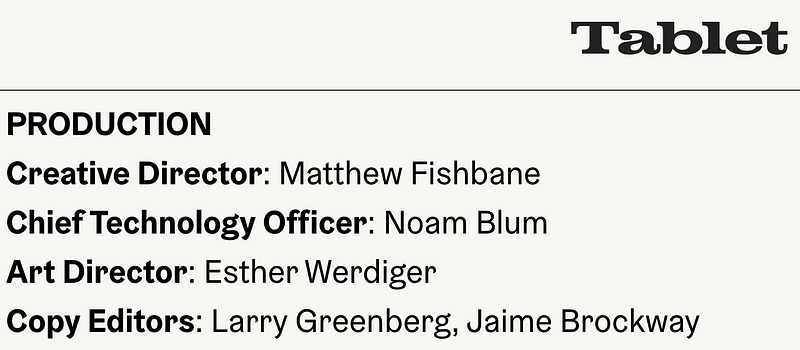
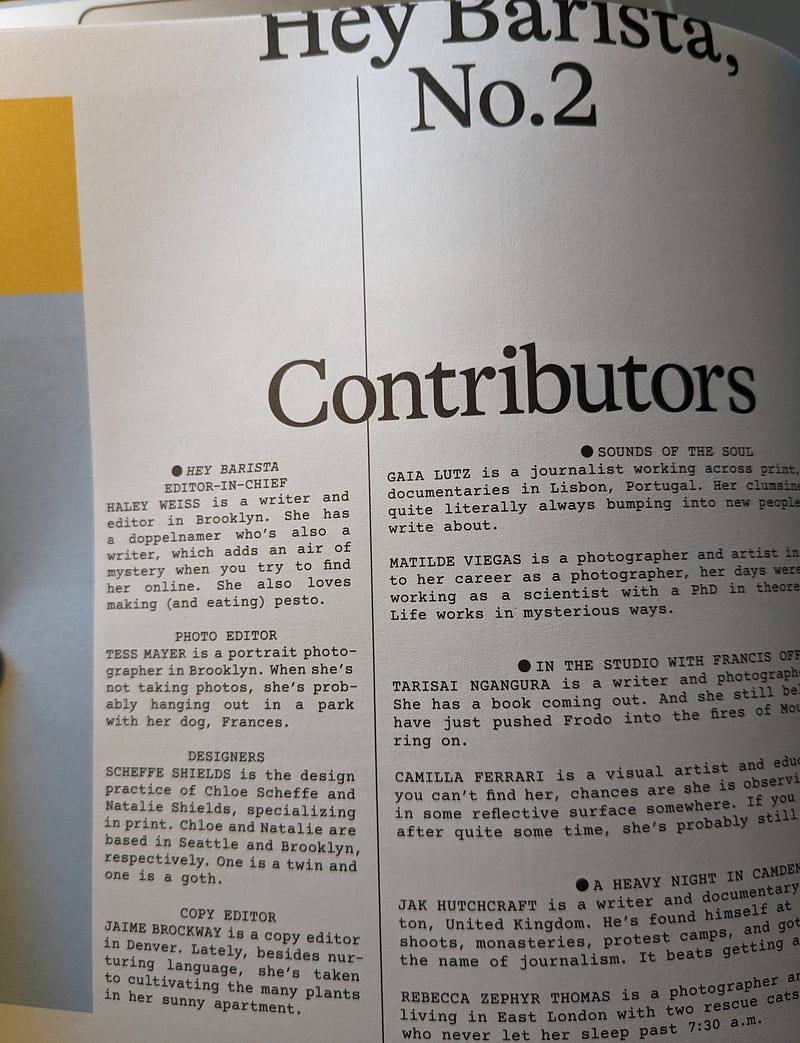
My bio in the bottom left corner of Oatly’s
Freelancing is challenging in many ways—mainly in that any success you have, or don’t have, is entirely on you. Would I have learned to advocate for myself as well if I weren’t a freelancer whose livelihood depended partly on getting credit? Probably not!
What small yet mighty step can you take today to receive credit for your work?
Enjoy this post? Buy me a coffee in support.
Hi, I’m Jaime, editor and owner of Pristine Editing LLC. To get to know me better, and for more editing tips, sign up for my quarterly email newsletter! You can also follow me on LinkedIn and Instagram. And don’t miss out on my free style guide template.
I Need to Make Sure You Know This One Thing About Editors
Recently, there was yet another round of layoffs in the editing world.
While it’s just the latest event in a yearslong trend, I wanted to say something about it nonetheless.
So I dropped work on my website redesign — coming in mid-September! — to hit you with this important broadcast … slash rant.
Here it is.
The first roles media companies tend to cut in times of financial struggle include copy editors.
These companies don’t want to reduce the quantity of content they publish. Unfortunately, that often means reducing the quality instead.
Last week the Texas Tribune laid off 11 employees, including its entire copy desk. (So long, copy editors who help to make sure the news is clear and accurate!)
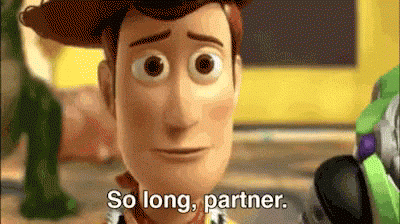
In June of this year, the Los Angeles Times cut 74 employees, and nearly a third came from news and copy editor ranks.
The trimming of editorial staff has been happening for years and years.
I was leading the copy desk at Time Out in 2017 when The New York Times cut its copy department, letting go of more than 100 copy editors.
The same thing is happening in the indie book world.
When times are tough, self-publishing authors can’t afford every round of editing. So they pass on a copy edit or proofread, or they combine edits.
(You all know how I feel about combo line and copy edits.)
I understand that, and I would much rather you share your stories with the world than not at all.
But I just want to make sure you know one thing:
*Copyediting and other forms of editing are important. They provide value. They provide quality assurance.*
And they do so across industries, increasing sales and readership.
Women are 81% less likely to buy a product advertised with spelling or grammar errors, and 77% of men agree.
Likewise, readers reported that poor writing, bad writing, grammar, spelling errors, mistakes, and language cause them to stop reading a book.
Copyediting upholds the integrity of journal articles, one study found.
Participants in another study “gave higher ratings to journalistic stories that had been edited than those that hadn’t.”
All of those surveys and studies show the efficacy of human editing, not AI or editing software — which is another important broadcast/rant I’ll grace you with later.
That’s all, folks.
Cheers,
Jaime
P.S. If you 100% believe in the power of editing and want me to edit your next project, don’t hesitate! Fill out this form.
Enjoy this post? Buy me a coffee in support.
Hi, I’m Jaime, editor and owner of Pristine Editing LLC. To get to know me better, and for more editing tips, sign up for my quarterly email newsletter! You can also follow me on LinkedIn and Instagram. And don’t miss out on my free style guide template.
Case Study: Tablet Magazine
How I helped Tablet Magazine by copyediting a longform article in two days

Photo by JESHOOTS.COM on Unsplash
Situation
In November 2022, Tablet Magazine, whose daily newsletter I edit, asked me to copyedit an unprecedented project: a 24,000-word story that would be published just after the Jewish holidays.
(FYI, that’s the size of a novella. The daily newsletter is 1,300–2,500 words.)
“It’s an incredibly moving and profound piece, and a pleasure to read,” the editor told me. The copy would be ready for me in mid-December, and I would have a week and a half to edit it.
Tablet has talented writers on staff and publishes nuanced, thought-provoking content, so I eagerly added the project to my schedule.
Task
On December 5, the same editor emailed me again: “Can you edit it in two days if I send it to you tomorrow?” Ah, news organizations with their fluid timelines.
It was Tablet’s biggest magazine event of the year. All hands were on deck, and the design team had put in a lot of work to make the digital story look amazing.
The editors at Tablet had been immersed in this story for months and needed fresh eyes.
Action
Because it was the end of the year, when everyone tries squeezing in projects before the holidays, my agenda was packed.
But I rearranged my entire schedule. I burned the midnight oil. And I delivered the copyedit of what was indeed an incredible story to the editor by the required deadline.
I gave this incredible piece justice by removing errors in grammar, punctuation, spelling, syntax, and style, and I flagged discrepancies in dates, names, and other details in a story that features a web of many storylines.
You can read the story, “The Rower” by David Samuels.
Result
Here is the resulting testimonial from the editor, Jeremy Stern:
“Jaime ensured that our biggest magazine event of the year — a near book-length essay that was reported over multiple years and continents, and included dozens of well-known and unknown characters and historical events — was as professionally copyedited as a major publisher’s printed book, fulfilling every exacting editor and reader’s expectation of error-free, stylistically uniform prose. She also did so on a brutally short deadline, which made the result even more impressive. I would enthusiastically work with her again on similar projects in the future.”
Why I Loved This Project
The story was incredible. So much time and effort has gone into creating it, and I was able to use my copyediting skills to polish the piece for publication, removing lingering issues that would distract readers and discourage them from reading 24,000 words.
I was able to accomplish that within Tablet’s time restrictions. If you’re considering using a freelance copy editor but are concerned that working with one would delay your content’s publication, know that it’s very feasible to integrate the copyediting step into your process.
As a freelance editor, I have control over my own schedule, with the ability to reorganize my agenda to suite client needs and accommodate their timelines.
Enjoy this post? Buy me a coffee in support.
Hi, I’m Jaime, editor and owner of Pristine Editing LLC. To get to know me better, and for more editing tips, sign up for my quarterly email newsletter! You can also follow me on LinkedIn and Instagram. And don’t miss out on my free style guide template.
2021 vs. 2022: My Business by the Numbers and Beyond
Coming at success from another angle. Plus, my 2023 word of the year.

Photo by Susan Holt Simpson on Unsplash
Year 2022 looked very different from Year 2021.
(And Year 2021 looked very different from Year 2020 — isn’t freelance fun?)
Before I dive into all that, I want to acknowledge that January 8 was my freelance anniversary. I left my role as national copy chief at Time Out North America in 2018. I have been freelancing full-time for FIVE YEARS.
Not only that, but freelancing full-time is the longest job I’ve ever held 😮
It boggles the mind. Every year I’ve freelanced has looked so different.
That said, here is what I’ve been up to in 2022, and how it compared to 2021, by the numbers.
Note: By the numbers, 2022 was not as successful as 2021. Below, I talk about looking at success from a different angle.
🟣I edited 1,268,571 words, compared to 1,365,228 in 2021.
🟣I made about $1,000 less than in 2021.
🟣I gained 2 new clients (a one-timer and a returning), whereas I gained 8 new clients (all returning/regular clients) in 2021.
–In 2022, 1 new client was from a referral, the other was from a job posting within a network I belong to.
–In 2021, the 8 new clients were from:
Upwork (2)
social media (2)
an application I completed in 2018 (1)
referrals (3)
🟣I grew my email list from 24 to 44 (in 2021 I started from 0).
🟣I increased my Instagram following by 114 people.
Okay, now let’s take a look without numbers. Here’s my reflection on both 2022 and the definition of success.
Whereas 2021 was all about challenge and business growth, my 2022 word of the year was balance. And I practiced it. I traveled across the country nearly the entire year, moving every 10 to 21 days from April through December. I visited friends and family I hadn’t seen in ages and went to places I had never been to (my email subscribers know where I went!).
I made less money in 2022 than in 2021, partly as a result of my constant travel. Once I knew what my income would be, disappointment crept in because after doubling my income from 2020 to 2021, I expected to make even more money the following year. Yet in January 2022, a big client I had acquired in mid-2021 told me it was ceasing content production and no longer needed me.
That hurt. Not only did my monthly income significantly decrease right away, turning my optimistic financial projection for the year into an unlikelihood, but I was *shook* over how easily I lost a client I had worked so hard to get the year prior. I realized lead generation and client acquisition will always take up a portion of my time, and that idea exhausted me.
Still, when I took a deeper look at my year, here’s what I saw.
I made less money in 2022, but not by much, and I edited fewer words. Considering I lost a big client, that’s a good outcome.
I didn’t gain as many new clients as I didn’t focus on client acquisition as much. However, I deepened my professional relationships with existing ideal clients who I expect will need me for a long time, setting the stage for a strong year. (Two of them approved rate increases for 2023.)
My Instagram followers increased slightly, but I gained new followers even during my accidental leave of absence from the platform from September to January. And my email list increased without much effort from me, which means the lead magnets and systems I created last year are working for me even when I’m not.
Taking all of that into account, I thought about what I wanted from 2023 and the word that would encompass those goals. Here’s what I landed on:
My 2023 word of the year is intentional.
I want to tackle one carefully selected project at a time, one that will actually lead me to ideal clients and provide value and isn’t just something others say I should do.
I want to find ideal clients who want to work with me on a regular basis for the long term.
I want to connect with other freelancers to find great clients and build a community that I can consult when I need advice (and vice versa).
After two years of willy-nilly activity—launching multiple projects simultaneously in 2021 and hopping from place to place in 2022—I want to be very intentional about what I give my time to.
And I can’t wait to see what that brings by the end of the year.
Enjoy this post? Buy me a coffee in support.
Hi, I’m Jaime, editor and owner of Pristine Editing LLC. To get to know me better, and for more editing tips, sign up for my quarterly email newsletter! You can also follow me on LinkedIn and Instagram. And don’t miss out on my free style guide template.
5 Things I Learned After 5 Years of Freelancing
Conclusions I’ve come to

Photo by Ryan Graybill on Unsplash
January 8, 2023, marked my fifth anniversary as full-time freelancer.
In January 2018, I left my role as national copy chief of Time Out North America in NYC. I had been freelancing on the side for a few months but decided to retry it full-time; freelance editing was one of my jobs when I first moved to NYC, but I knew next to nothing about the magazine publishing world at the time, which made navigating freelance quite difficult. (What pay rates are good pay rates? When is a client’s expectation standard or unreasonable? What does an edit for this type of project usually involve?)
Five years in, I’m still learning a whole lot, but I’ve amassed a humble collection of lessons.
Giving 100% to every project is the best way to get new clients.
The past two years, I’ve experimented with many methods of lead generation and client acquisition. I launched social media, my website, and my newsletter. I applied to jobs on Upwork, LinkedIn, and Indeed. I cold-pitched. Far and away, the best method is referrals.
Of the 12 clients who paid me in 2022, 50% were from referrals. Whereas I worked hard to get the other 50%, all I had to do to get these referral jobs was to do my best on paid projects. In 2021, I landed a big client who hired me because a staffer there had gotten a referral from someone I worked with three years’ prior on a one-time project. Never underestimate the power of providing quality work.
Clients love knowing a reliable person who delivers quality work because it makes them look good to recommend me to their connections who need editing or writing services.
Being a freelancer has made me a more valuable hire.
Working in a more traditional, one-company role, I did my part but never learned how the departments outside of my immediate orbit operated. I was more concerned with my own tasks and responsibilities and didn’t understand the full picture.
As a freelancer, I do invoicing and budgeting, project management, marketing, copywriting, contracts and client acquisitions…in addition to my core services of editing and writing. I have grown so much, and my knowledge of business operations has vastly increased, as has my respect for how businesses of more than one person function 😂
Freelance is a constant experiment, and you have to be comfortable with that to do it.
You might reach a plateau in a full-time, one-company role, but that will never happen in a freelance role.
For me, every year of freelance has looked different than the one before it based on my attitude, my finances, my clients, my accompanying lifestyle.
That’s what most freelancers love about their work. It evolves along with them. It is never finished. I have a long list of things I would love to be doing in my business, each of which will bring a new facet or layer to my work.
The fluidity of freelance can be frustrating and nerve-racking, but it’s exhilarating too. Time never drags; my days fly by.
You can travel while working remotely, but to grow, staying in place is best.
I freelanced full-time for eight months in NYC before I took it abroad. From September 2018 to August 2020, I traveled to Mexico, Cuba, Guatemala, El Salvador, Honduras, Nicaragua, Costa Rica, Panama, Colombia, Peru, and Chile. I moved every two days to three weeks, expect for the last 4.5 months, which I spent in Coyhaique, Chile, and I worked on my laptop the whole time.
I maintained my existing clients but never attempted to get new ones. It wasn’t until I came back to the States to live in my parents’ house during the pandemic that I had endless time to take online courses, create an online presence, and build my client roster.
I never would have had the time (or the desire) to do that as a backpacker. Staying on one place was the only way to focus on it. (And my income doubled from 2020 to 2021 as a result.)
Contracts come in handy before you even use them to take legal action.
They filter out questionable clients.
Once a person contacted me out of the blue to hire me for a project I had never done before. We talked on the phone and she was pleasant, although she seemed slightly unsure of what she wanted. We sent several emails back and forth before agreeing to collaborate.
I sent her the contract and never heard from her again. I consider it a blessing!
2. They help you nail down specifics with clients.
It’s impossible to complete a project well if you don’t know exactly what you’re supposed to be doing. Adding all the project details and expectations to the signed contract encourages each party to be clear.
If you’re writing blog posts for someone, talk about word count, deadlines and frequency, time/pay limits, pay rate (flat fee or hourly?), the onboarding process (will you do a trial period with the option to go your separate ways if it doesn’t work out?), style and voice…everything.
BONUS LESSON
Your relationship with the people you work for will fundamentally change for the better.
I may not have coworkers anymore, but some relationships with my clients border on friendship. Two clients have been with me for nearly six years, and a few more are approaching two years.
By freelancing, I knew I would never have to be pigeon-holed into one role. But I never realized how my professional life would improve by collaborating directly with clients.
As a freelancer, I see the impact of my work. When clients appreciate my contribution, they tell me so. Sometimes when I’m experiencing some imposter syndrome, I read testimonials from clients and am reminded that I’m very good at what I do.
Enjoy this post? Buy me a coffee in support.
Hi, I’m Jaime, editor and owner of Pristine Editing LLC. To get to know me better, and for more editing tips, sign up for my quarterly email newsletter! You can also follow me on LinkedIn and Instagram. And don’t miss out on my free style guide template.
A Roundup of My Favorite Quotes from ACES Accelerate
Nuggets of wisdom from writers and editors to other editors
ACES Accelerate was a virtual conference held by ACES: The Society for Editing, of which I am a member. There was so much to take away from the sessions at this conference that I could write many a blog post in reaction (coming soon!), but I wanted to share a quick roundup of my favorite quotes from a few presenters.

Photo by
on
Jenny Lawson, aka The Bloggess, is a blogger turned NYTimes-bestselling author who was the keynote speaker at ACES Accelerate. She had us laughing throughout her whole speech yet at the same time shared poignant insights on the writer-editor relationship, which is the exact charm of Jenny Lawson.
Cara Reedy, director at Disabled Journalists Association, and Wendy Lu, a senior staff editor at The New York Times, presented on avoiding disability euphemisms in the news. A couple points Reedy made stuck with me.
Lisa McLendon, who runs the Bremner Editing Center at the University of Kansas journalism school, offered some gems of advice that apply to all copy editors. Both of these are golden rules of copyediting.
Enjoy this post? Buy me a coffee in support.
Hi, I’m Jaime, editor and owner of Pristine Editing LLC. To get to know me better, and for more editing tips, sign up for my quarterly email newsletter! You can also follow me on LinkedIn and Instagram. And don’t miss out on my free style guide template.
How I Doubled My Business from 2020 to 2021
My aggressive growth plan paid off. Here’s everything I put in motion.

Photo by
on
In August 2020, after more than two years working as a full-time freelancer, I realized that my business had become stagnant. Since I had begun independently providing writing and editing services to clients in early 2018, my business had not changed. My client base largely remained the same, as did the way I operated day to day. Although the work was steady, I knew it was in a precarious position: The loss of one major client would disrupt my business and significantly decrease my income. I had to be better prepared in case that occurred.
What’s more, I knew my business practices needed a refresh. I was curious how investing in my skills and knowledge relating to technology, marketing, and other areas would affect my business. I wanted to see how viable working for myself could be in the long run. So, in mid-2020, I made a plan to aggressively grow my business.
The Early Years of My Business
From January 2018 to August 2020, I relied completely on client referrals. I didn’t have a website, and I didn’t use social media. All of my clients could be traced to the network of contacts I made as a magazine copy editor in NYC. (Most notably, I led the copyediting department at Time Out North America as national copy chief.)
In those two years, I focused on client satisfaction and retention, building a modest yet stable freelance business. I fine-tuned my skills as a copy editor and a line editor for a diverse client base that needed me to edit a wide range of media: short- and long-form online articles, print and digital magazines, video, social media, website copy, books, brochures, apps. I became expert in adjusting my style of editing to each client’s style and voice and each content form.
However, in 2020, my business reached a plateau. It was reliable, but it was not growing. As is common for freelancers, I would often find myself in feast-or-famine situations: Some weeks I would be swamped with work, and other weeks projects would trickle in. I wanted to standardize my workload every week. Plus, the work no longer challenged me. So I developed a plan for a new way forward.
The Aggressive Growth Plan
In September 2020, I took a six-week online freelance-writing course on how to grow a business to $5,000 a month (the subject matter applied to most freelancers of all kinds). That course covered mindset; how to build and manage a website and social media; how to identify your ideal target client; client relations and contracts; negotiating fees; and more.
In December, I began taking online copywriting courses through Copyhackers, the copywriting school started by renowned conversion copywriter Joanna Wiebe. Those courses helped me better understand how to write landing pages, web copy, and emails that would attract and convert visitors. I intended to use those skills not only to improve my own business but also to potentially expand into another area of expertise.
By taking those courses, I educated myself on how to market my writing and editing business to a target audience and generate new leads without relying only on referrals. I discovered how to take advantage of free tools that made it easier for potential clients to find my business, learn about my services, and interact with me.
For example, I created a lead magnet — a free customizable editorial style guide template — to draw subscribers to my new quarterly newsletter. I wrote and set up an automated five-email welcome sequence using MailerLite, an email marketing software, to efficiently engage with and retain subscribers. I launched a website, a blog on Medium, and social media accounts (Twitter, Instagram, LinkedIn, Pinterest). I also used Typeform to create an online project request form that clients could fill out in two minutes to contact me and share their project details.
Next, I began to pursue new client leads and projects by applying to gigs on Upwork and Indeed, focusing on long-term collaboration.
As business began to grow significantly, I had to learn how to become more productive and efficient with my time. I began to track my daily word count, which eventually enabled me to understand how many words I could realistically edit in a day while managing other tasks like emailing, content production, and invoicing. Instead of relying on a to-do list, I scheduled time for every task in a timeboxed calendar.
A More Efficient, Lucrative, Sustainable Business
From 2020 to 2021, I doubled my income. I gained eight new clients in 2021, all regular or returning: two from Upwork, two from social media, three through referrals (one from an Upwork client), and one through an online application.
Between June and December 2021, I grew my email list from 0 to 24 subscribers (today there are 29), and the last email I sent had a 50% open rate. I launched my editing Instagram in November 2020, and it generated a client by April 2021. I regularly generate leads through LinkedIn. Seven prospects have contacted me through my online project request form, and three have become clients.
My online presence has given me more credibility and has made it easier for potential clients to explore my services. I’ve even developed stronger relationships with clients because they can engage with and learn about me through multiple platforms. Overall, the effort I put into taking classes and applying what I learned evolved my business, making it not only more lucrative but also more efficient and sustainable for the long term.
Enjoy this post? Buy me a coffee in support.
Hi, I’m Jaime, editor and owner of Pristine Editing LLC. To get to know me better, and for more editing tips, sign up for my quarterly email newsletter! You can also follow me on LinkedIn and Instagram. And don’t miss out on my free style guide template.
I’m a Longtime Pro Editor Offering Consultation to New Editors
Access me for advice at BuyMeACoffee.com

Photo by
on
As with trying to start any new side gig, breaking into freelance editing can be daunting.
While there’s a wealth of online courses and books that share how to be a successful freelancer and editor, true confidence in your skills comes with practice over time.
If you’re new to editing, you may not feel 100% certain of your ability to meet clients’ needs or deliver quality editing services. Those feelings of insecurity or imposter syndrome are an obstacle to your success as a freelance editor.
For me, learning the ropes of editing under the mentorship of more experienced editors was crucial to the development of my skills and confidence.
So I decided to try and create the same experience for others. I want this Buy Me a Coffee community to be a place where new or aspiring editors — freelance or otherwise — can reach out to me for advice or assistance.
https://media.giphy.com/media/GNBCVMv6XobnMUMYJG/giphy.gif
On Buy Me a Coffee, I’m offering two memberships:
☕ The Skim Readers. I will do a weekly Q&A, giving a long-form answer to a member’s question about any aspect of editing or freelancing. $5/month or $50/year.
☕ The Word Surgeons. In addition to getting access to the Q&A, Word Surgeon members will also get one hourlong consultation with me per month, during which you can ask me anything or even have me review your edits to a project so you can feel extra confident you’re providing quality to a client. $45/month or $450/year.
Read more details about the Word Surgeons membership.
My hope is that these memberships will ease the doubts and anxiety you may feel as you go forward.
I so look forward to welcoming you to my editing community!
My Background As an Editor
After four years of honing my editing chops at NYC magazines, I began freelancing full-time in January 2018, and I haven’t looked back!
Today I specialize in copy editing and line editing branded content, websites, blogs, fiction books, print and digital magazines, apps, daily newsletters, and more for clients who are all over the map — geographically and industry-wise.
You can learn more about my clients and history on my website or LinkedIn.
Also, after several people reached out to ask me how I became a freelance editor, I created the below video to answer that question.
[embed]https://www.youtube.com/watch?v=iSDkFkr4gRU[/embed]
Every year of freelancing has been different than the one before. And that’s something I love about it: Freelancing is a constant experiment in how I can be doing things better, faster, or smarter.
It can be nerve-racking! But it’s also fun, and I believe that it has made me a better, more competitive editor than I was while working for one company.
Enjoy this post? Buy me a coffee in support.
Hi, I’m Jaime, editor and owner of Pristine Editing LLC. To get to know me better, and for more editing tips, sign up for my quarterly email newsletter! You can also follow me on LinkedIn and Instagram. And don’t miss out on my free style guide template.
Client Etiquette: How an Editor Should Interact with a Client Always
And the recent etiquette mistake I made even though I knew better
Photo by
on
Let me tell you about a recent mistake I made as an editor.
I was doing a developmental edit of a 3,000-word blog post for a tech startup. This startup did not have its own writers; instead, it hired a service that provided a handful of writers to produce regular blog content.
My job was to ensure that these writers adhered to the voice and style of the tech startup, and that the content was error-free and engaging. I would review each post twice: first a developmental edit, then a copy edit.
During the developmental edit, I would leave comments to the writers with suggestions for improving structure and organization; simplifying or clarifying language; explaining a complex idea more thoroughly or accurately; and meeting the tech startup’s style guidelines.
The content was complicated—think artificial intelligence and sales processes—and the writers were not subject experts.
Still, after more than a month, the startup’s editorial manager and I felt that the writers were not listening to our feedback as well as they should. It seemed we were repeatedly giving them the same notes, and the writing at times was rushed and sloppy.
That created more work for me as the editor and delayed the content production timeline for the startup.
So the editorial manager sent an email to the writing service pointing out the blog posts that were weak and why they needed more attention, adding that some writers didn’t seem to be making an effort to research and understand the material. The writing service responded and promised to improve.
However, when I began to edit the next 3,000-word post that came in, I was dismayed to see that many of the same issues remained.
One particular section of the post, a large paragraph, not only didn’t address our previous feedback but also just didn’t make sense. The writer clearly didn’t understand the tech or even the industry of the startup, and as a result, the sentences were vague and confusing and the information shared was incorrect.
I sighed, then highlighted the section and left a comment: “This isn’t working. The writer doesn’t seem to understand the subject matter. Please fix.”
That comment unleashed the kraken.
https://media.giphy.com/media/3ogwFUjNax6RYPvJm0/giphy.gif
The owner of the writing service wrote a furious response. He said my comment was disrespectful and unhelpful (to summarize a much longer rant).
And you know what? He was right.
I had forsaken a cardinal rule of editing that I had learned long ago:
Always be kind and helpful in comments to the writer.
Etiquette demands that an editor should always be conscious of tone of voice when interacting with and providing criticism to the writer.
We have to show respect for the people who create content out of nothing! Being a writer is challenging—especially when you’re writing about something of which you know nothing (a common occurrence for a professional writer).
Beyond that, I knew very well that comments to writers should never just point out problems. They should always suggest a solution in tandem.
What is a writer supposed to do with a comment that says “This doesn’t work” but doesn’t provide a way forward? Maybe that writer struggled to get to that point, simply didn’t know what to do to strengthen that section, and just needed some guidance. In that case, receiving a comment like mine would be frustrating and demoralizing.
Leaving helpful comments is a practice I uphold with every client I have, and I also firmly believe it’s a great way to filter out editors who aren’t a good fit for you.
If your editor isn’t supplying you, the writer, with comments that not only point out the problem but also offer an actionable solution or next step—in a pleasant, respectful tone of voice—then it’s time to look for another editor.
Which is why I was disappointed in myself for leaving such a short comment. I knew better.
Sure, the editorial manager and I had already given the writing service a lot of feedback. That was why I left the comment I did—I imagined the writer would make the connection between my comment and that feedback.
After all, the writer is responsible for consuming and listening to all constructive criticism in order to do better in the next round.
But a comment in a Google doc was not the place to get snarky.
I should have listed all the reasons the section did not work and share a suggestion. And then the editorial manager could have stepped in to have a larger conversation with the writing service about meeting the tech startup’s needs.
As an editor who also writes professionally, I recognize how important it is to have an editor who respects the work you put in to creating content.
And that respect should shine through in every interaction writers have with their editors.
Enjoy this post? Buy me a coffee in support.
Hi, I’m Jaime, editor and owner of Pristine Editing LLC. To get to know me better, and for more editing tips, sign up for my quarterly email newsletter! You can also follow me on LinkedIn and Instagram. And don’t miss out on my free style guide template.
The Sanctity of the Writer-Editor Relationship
There’s an unspoken pact between writers and editors.

Photo by
on Unsplash
Recently I rewatched Mary Norris’s Ted Talk—for possibly the 20th time—and, as always, a new gem stood out to me. Norris, former New Yorker copy editor, touched on the writer-editor relationship:
There is a pact between editors and writers. The editor never sells out the writer, never goes public about bad jokes that were cut or stories that went on too long. A great writer saves an editor from her excesses.
Listening to this quote had me nodding along in agreement, and it made me want to explore the writer-editor relationship further for the sake of my clients—or for potential future clients who are currently hesitant about working with an editor.
Writers, especially new writers, may think that sharing their work with an editor will “out” them as a…bad writer. Someone who doesn’t deserve to be among the ranks of those who call themselves scribes.
That’s why I want to share a key lesson I learned early on in my career as an editor:
Everyone needs an editor. Everyone.
It matters not in the slightest whether you are a naturally strong writer or even a great editor! Whatever you wrote can be improved by another pair of eyes, and further still by a pair of professional eyes. I’ve been a professional editor for eight years, and I still ask others for feedback and edits on important work.
As someone who also writes, I take great comfort from this lesson. I no longer fear criticism of my written work because I know every writer receives criticism. It’s just part of the process.
I’m not embarrassed by the “faults” in my writing because I’ve seen it all as an editor—and I am being completely honest when I say that I don’t judge as I edit. I never think, Oh, jeez, a dangling modifier, don’t they know anything about syntax? or Wow, that’s a major plot gap, how could they have missed something so egregious?
Furthermore, I never assume writers don’t know the rules of grammar, spelling, punctuation, etc., if their work includes such an error.
Editors know that writers encounter all kinds of obstacles in the writing process: deadlines, heavy workload, lack of inspiration, low expertise in the topic, simply having lived with a piece of work too long to be able to see it clearly…
The act of writing is challenging. What’s more, writing and editing use two different brain modes, as Anupam Krishnamurthy says in his post “Separate your writing from your editing”:
Our brain alternates between working in the diffuse mode and the focused mode. The diffuse mode is responsible for open, creative thinking.… The focused mode…helps us determine logic, structure and sequence.… For a given task, the brain can be either in the focused mode or the diffused mode. Mixing up our writing and editing causes us to switch between these two modes, breaking the flow of our thought.
For writers to get the words on the page, they have to release the unrealistic goal of making it perfect the first time around.
What writers need to know about editors is that we have a profound respect for you. Because it takes determination and creativity to write. Editors react to the text. Writers create it from nothing.
This lays the foundation for the writer-editor relationship.
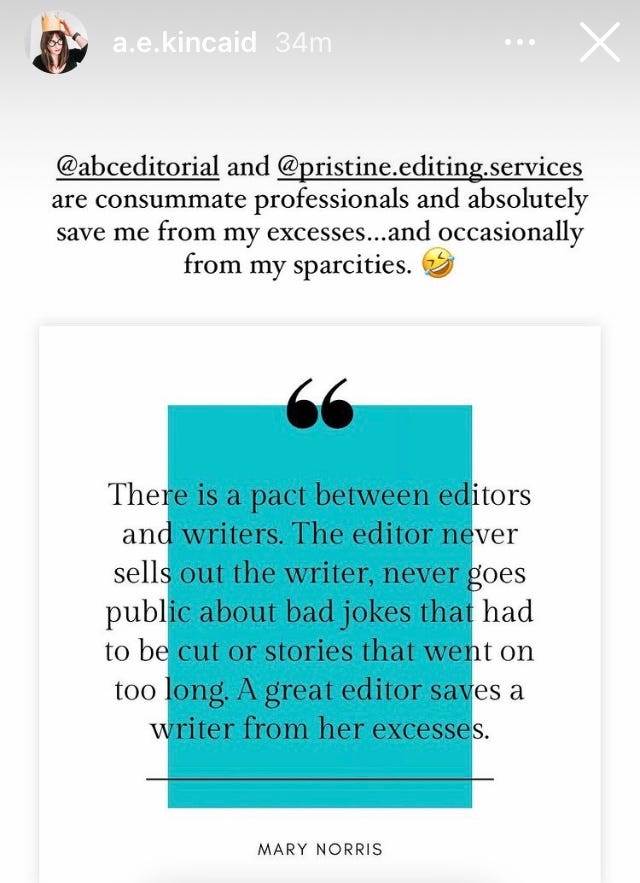
A little client love from a book author
The editor never sells out the writer because that would just be…blind to the writing process.
The writing process is a cycle of prewriting, drafting, revising, and editing on repeat until the work is the best version it can be.
Just as our private thoughts are not who we really are, incomplete drafts do not determine the writer. What matters is what we put out into the world: the final draft.
Editors understand that, which is why it doesn’t faze us to make even hefty changes and suggestions to a writer’s work—be it a manuscript, blog post, thought piece, anything.
Some writers may struggle with the idea of ownership when it comes to their work. If an editor gives me tons of feedback or makes lots of changes, is the work even my own at that point?
Yes, it is.
The writer is the creator, and the editor is the reactor. And the editor will never share what the excesses, gaps, or errors were in the drafts because, frankly, it doesn’t matter.
Hi, I’m Jaime, editor and owner of Pristine Editing LLC. To get to know me better, and for more editing tips, sign up for my quarterly email newsletter! You can also follow me on LinkedIn and Instagram. And don’t miss out on my free style guide template.
Can an Editor Also Be a Writer?
Yes. Here’s why being a “sometimes writer” makes me a better editor.

Photo by
on
Acquaintance: “What do you do?”
Me: “I’m an editor and sometimes writer.”
That’s been my response for a few years now.
Editing is my main gig. Most of my work over the past decade has been focused on editing. Most of my clients use me for editing, not writing.
Still, there’s never been a time in my career when I was doing only editing or only writing. The two are inseparable.
https://media.giphy.com/media/iFsCkq1xk05l4DbgrY/giphy.gif
My first job after undergrad was as a reporter and staff writer for an industry newspaper. The team was so small—me, plus another journalist—that he and I also proofread each other’s work.
As an editorial intern at Food52 in NYC, I would regularly write and line-edit articles. (You can view my posts here.) At Well+Good, I line-edited five articles a day and occasionally pitched ideas for travel tips and essays.
When I began my role as copy editor at Time Out, my daily responsibilities revolved around editing. But it was simple to pitch a story idea to the editors of each vertical—they were only a desk away, and everyone was encouraged to contribute to editorial brainstorm sessions. Sometimes vertical editors needed all hands on deck to write a feature, or their regular freelance writer wasn’t available and they were desperate for help.
So, while I was at Time Out, I wrote blog posts and theater and restaurant and hotel and bar reviews, and I contributed to features. (Plenty of magazine copy editors occasionally write something—for instance, The Atlantic’s copy chief, Janice Wolly.)
Later, as a freelancer, I routinely wrote case studies for a client who then asked me to developmental-edit other writers’ case studies because mine were strong. #humblebrag
In the freelance world, a huge emphasis is placed on niching.
New freelancers are told that the best way to attract clients is by choosing a niche—the one thing you are an expert in (or say you’re an expert in). Advanced freelancers advise that a niche is key to charging more money because you can claim to be an expert, the best in the biz in that one thing.
Consequently, people looking to hire a freelancer are told to avoid jack-of-all-trades. It’s a red flag if a freelancer claims to be good at too many things.
I agree—to some extent.
But I firmly believe that being a writer makes me a better editor.
By writing, I remember the writer’s perspective. I’m reminded of how frustrating and tedious the writing process can be and how much effort and dedication it takes.
More important, I recall what it feels like to receive criticism of my writing. And that makes me a more empathetic editor.
I aim to be sensitive, clear, and specific in comments to writers and authors because I know what it’s like to receive disrespectful, vague, ineffectual feedback on writing I worked hard to produce.
As a writer, I appreciate constructive criticism on what could be better in my work, and positive feedback floods me with motivation. It gives me the fuel I need to get to the next draft. And that’s exactly what I want to inspire among my clients, authors and content producers alike.
When I polled other editors on Twitter, 42.9% said they too also write, while 40% of editors said the same in an Instagram poll (only seven people voted, but still!).
Of course, I’ve met excellent editors who simply don’t like writing.
But I feel that it gives me a competitive edge and makes me more valuable to my clients. Plus, I enjoy exercising the writing muscle!
So, in honor of Freelance Writers Appreciation Week (Feb. 13–19), here’s to all the other editors out there who also write.
Hi, I’m Jaime, editor and owner of Pristine Editing LLC. To get to know me better, and for more editing tips, sign up for my quarterly email newsletter! You can also follow me on LinkedIn and Instagram. And don’t miss out on my free style guide template.
The Simple 5-Step Process of Working with Me
Finding the right freelancer to work with can be a grueling process with a lot of unknowns. Will this person be able to deliver what I need? Is she actually an expert in copyediting and proofreading? Is she self-motivated and reliable, or will I have to check in constantly to make sure she’s meeting deadlines?
Allow me to ease your worries and doubts. My goal is not only to deliver you edits that elevate your content but also to ensure that collaborating with me is seamless. Here is what the process of working with me will look like:

Initial Contact
People interested in working with me can reach out via email (info@PristineEditing.com) or they can fill out this handy form to tell me about a project in 2 minutes flat! (Really, 2 minutes.) The second option is great for people who aren’t sure what information to share to get things started.
Once you reach out, I’ll likely get back to you within 24 business hours.
The Get-to-Know-You Call
An initial 15-minute call with me is free—and optional! Whether you seek a deeper explanation of my services, have a “weird” project and want to get a sense of whether I could help you with it, or just don’t know what you need and would like some guidance, the call is for you.
We’ll chat about your brand and your project details, and then I can tell you a little more about me and explain what services I can offer you. This is a low-pressure call — we are simply exploring whether we are a good match for collaboration.
Some people may know exactly what they want and opt to skip a call altogether, which is fine by me.
Project Confirmation
The get-to-know-you call went well! We both think we’re a good fit for each other. Now it’s time to hash out the details. I will send you a project proposal, we’ll discuss my rate, and then I will create the contract for us to sign. For one-time, flat-fee projects, I ask clients to make a 50 percent deposit.
Project Kick-Off
You will share with me all relevant documents that I need to complete the project. And then you sit back and relax, knowing that your project is in capable hands. Since we discussed details in depth, I know exactly what you want and what I agreed to deliver.
Project Completion
By the deadline we set (or even earlier!), the completed edit — which has morphed your content into a thing of beauty! — will be waiting for you in your inbox. Depending on our agreement, we may go through one or two rounds of feedback in which you review my edits, ask me questions, and then ask me to review the changes you’ve made. Then I will send you the final invoice to complete payment.
And that’s a wrap! Hopefully you will have enjoyed the process of working with me so much that we’ll become long-term partners, as so many of my current clients have.
Hi, I’m Jaime, editor and owner of Pristine Editing LLC. To get to know me better, and for more editing tips, sign up for my quarterly email newsletter! You can also follow me on LinkedIn and Instagram. And don’t miss out on my free style guide template.

